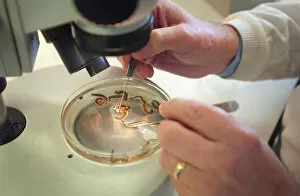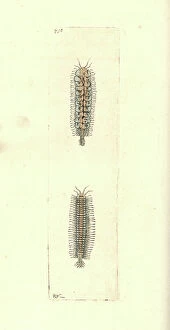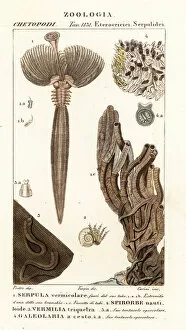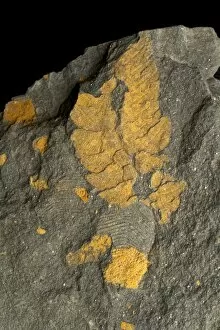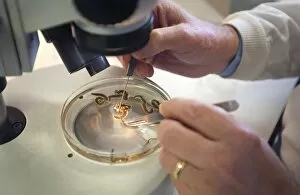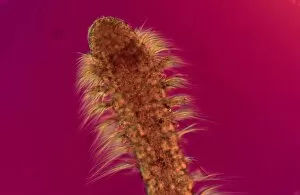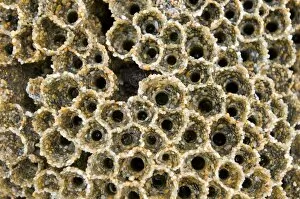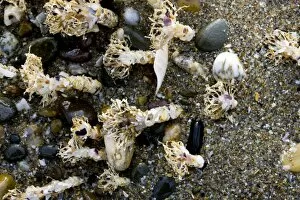Polychaete Worm Collection
In the world of marine biology, scientists are constantly uncovering fascinating creatures that inhabit our oceans
For sale as Licensed Images
Choose your image, Select your licence and Download the media
In the world of marine biology, scientists are constantly uncovering fascinating creatures that inhabit our oceans. One such creature is the polychaete worm, a diverse and intriguing species that never fails to captivate researchers. A dedicated scientist can be seen in this image carefully examining a ragworm specimen. With meticulous precision, they study its intricate features and behavior, unraveling the secrets hidden within this enigmatic creature. The handcoloured copperplate engraving showcases various species of polychaete worms found in different habitats. From the elegant fan worm, Serpula vermicularis, to the tube-building annelid worm Spirobranchus triqueter, each one displays unique characteristics that contribute to their survival in their respective environments. One particularly striking image reveals an armoured worm under a scanning electron microscope (SEM). The detailed view highlights its remarkable structure and adaptations for life beneath the waves. Not all polychaete worms reside deep below the surface; some thrive in shallower waters like Osedax mucofloris or Arenicola loveni. These North Sea inhabitants play vital roles within their ecosystems and continue to fascinate scientists with their resilience and adaptability. Rotularia bognori showcases another aspect of these incredible creatures - their ability to construct elaborate tubes as protective shelters. These structures provide both safety and stability for these delicate organisms as they navigate through challenging underwater landscapes. Cape reef worm tubes stand tall against crashing waves, serving as a reminder of nature's ingenuity even in harsh conditions. Their vibrant colors create a mesmerizing sight at low tide when peacock worms emerge from hiding places along rocky shores. As we delve deeper into understanding these captivating creatures, we gain invaluable insights into our planet's biodiversity. Polychaete worms remind us of nature's endless wonders waiting to be discovered beneath the ocean's surface – an ever-evolving tapestry woven by millions of tiny threads.

